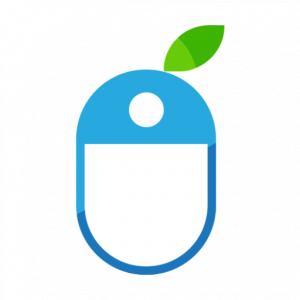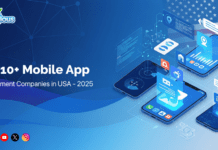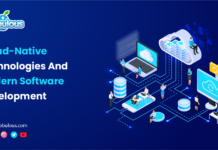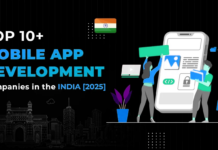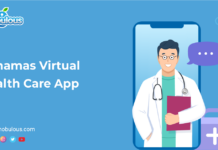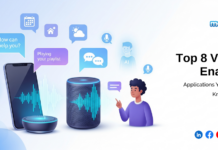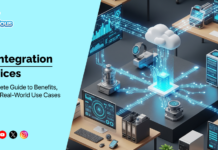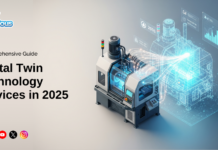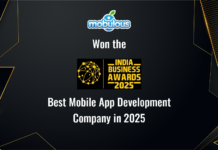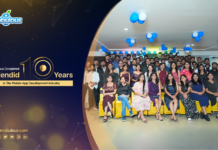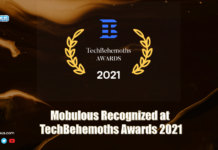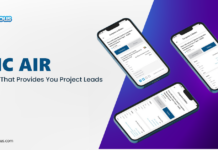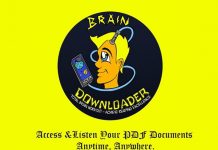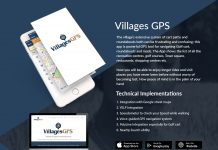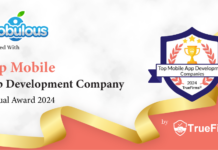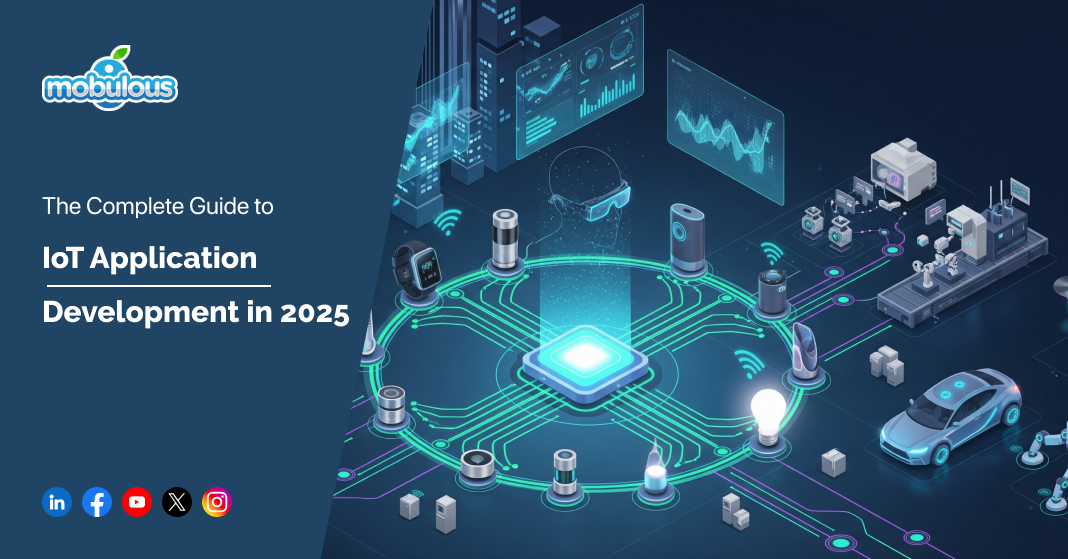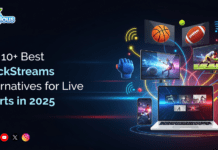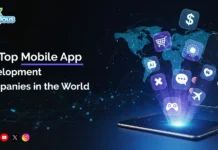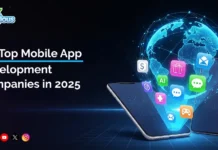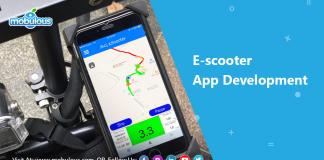What is IoT Application Development?
IoT application development is the process of building software that connects smart devices to talk to each other and share data, which often happens without human input. The goal is to improve how devices work to help users, save time, and boost decisions in industries everywhere.
IoT application development in 2025 goes far beyond simple gadgets. It’s about large, connected systems working together. Sensors gather data, and apps process it in real time. The results drive automation and smart actions. These systems are built to grow fast, adapt quickly, and stay reliable across various industries.
Looking to bring your idea to life? Check out an IoT App Development Company for expert solutions tailored to your needs.
IoT Application Development Key Components
1. Hardware
Hardware includes physical tools like sensors, microcontrollers, and actuators. These parts collect, send, or react to data. They are the backbone of any IoT system. The right hardware ensures accuracy, power efficiency, and smooth performance in every IoT application development setup.
2. Software
Software is the brain behind every IoT setup. It powers device operations and connects with the cloud. From embedded firmware to mobile dashboards, it manages how things work. In IoT application development, software must be fast, stable, and easy to update when needed.
3. Network
The network moves data between devices and systems, which includes Wi-Fi, Bluetooth, 5G, Zigbee, and more. The network must be stable and fast. In IoT application development, strong networking is key. It allows devices to share and act on data instantly and securely.
4. App
The app is how people interact with the system, showing alerts, insights, or controls. Apps can run on phones, tablets, or computers. In IoT application development, the app must be clear and easy to use. It turns complex data into simple, useful information.
Read more: Top 10+ IoT App Development Companies in USA @ 2024
Features of IoT Application Development
1. Device Compatibility
IoT application development must support many devices. These devices may use different operating systems or protocols. The app must connect with all of them, which ensures smooth performance. It also avoids errors or disconnections between systems from different makers.
2. Real-Time Data Processing
Speed is everything. Real-time data lets devices act instantly, which helps with safety, automation, and efficiency. In IoT application development, fast processing means less delay. It keeps the system smart, quick, and ready to respond when something important happens.
3. Remote Monitoring and Control
Users need control from anywhere. IoT application development includes remote access tools. You can watch cameras, adjust thermostats, or check sensors. All this can happen from your phone. It saves time, boosts safety, and adds serious convenience.
4. Scalability
Systems grow to more users, more devices, and more data. IoT application development must prepare for that. Scalable apps stay fast even when demand rises. They expand without breaking, which helps businesses grow without needing constant system rebuilds.
5. Robust Security Measures
Security protects data and privacy. IoT application development must build in layers of defense, which include data encryption, firewalls, and login protections. Devices can be easy targets. So security must be strong, updated often, and built into every level.
IoT Application Development Benefits
1. Increased Efficiency
IoT application development automates many tasks, which reduces human error. Devices work together to save time and energy, which boosts overall productivity. Less manual effort means faster results and fewer mistakes across systems or workplaces.
2. Cost Reduction
Smart systems help cut expenses by spotting problems early, which reduces energy waste. IoT application development creates apps that prevent downtime. Over time, this saves money on repairs, labor, and unnecessary equipment use. It adds real value to any business.
3. Improved Customer Experience
Customers expect quick, smooth service. IoT application development helps deliver just that. Apps can personalize services, and devices can alert companies to issues before users complain, which leads to happier customers and better brand loyalty without adding more workload.
4. Enhanced Data Insights
Data drives smart decisions. IoT application development turns raw data into clear insights. Businesses learn what’s working and what’s not, which helps them adjust, improve, and stay ahead. Better decisions start with better information, and IoT delivers that.
Challenges of IoT Application Development
1. Security
Connected devices face big risks, and hackers look for weak points. IoT application development must focus on safety, which means regular updates, secure logins, and encryption. Every layer of the system needs protection. Even one gap can lead to serious damage.
2. Interoperability
Devices from different makers don’t always work well together, which is a problem. IoT application development must ensure that all devices can communicate clearly. It needs support for many standards. Without that, systems fail or send bad data.
3. Scalability
A small system today might grow fast tomorrow. IoT application development needs to plan for that. It must handle rising traffic, more devices, and complex data. If not, performance drops. Apps need strong foundations to grow with demand.
4. Data Management
Too much data can become a problem, as storing, sorting, and using it wisely takes planning. IoT application development must include data filters, cloud support, and smart storage solutions. Otherwise, systems get slow or fail under the load.
How to Choose the Right IoT Application Development Company
1. Evaluate their Experience
Start by checking the company’s past work. See if they’ve handled smart homes, wearables, or industrial IoT projects. Relevant experience makes a big difference, which helps avoid delays. It also improves the overall quality of your IoT application development process.
2. Assess Technical Expertise
A skilled team knows embedded systems, mobile apps, and cloud platforms. They should handle AWS IoT, Azure, and Google Cloud easily. Ask about their experience with device integration. Their technical range will directly impact your app’s performance and reliability.
3. Check their Security Protocols
Security should be built into every step. Ask about encryption, authentication, and update processes. A company that takes security seriously protects your data and devices, which is critical. IoT application development without proper security is asking for trouble.
4. Understand their Project Management
Communication is everything. Find out how they share updates. Do they work in agile sprints or fixed milestones? Can you reach them easily? A good process saves time. A bad one leads to confusion, delays, and frustration on both sides.
IoT Application Development Best Practices
1. Build Security into Every Layer of the System
Don’t wait until the end to think about security. Encrypt data from devices to the cloud. Use secure authentication. Make updates easy and safe. When security is part of the foundation, IoT application development becomes safer and more reliable from day one.
2. Design for Scalability from the Start
What works for 10 devices may fail at 10,000. Use cloud-native tools to keep your system modular. Plan your data flow early. Scalability means growing without breaking, which helps future-proof your IoT application development and avoids costly rework later.
3. Focus on Delivering a Great User Experience
The app should feel smooth and simple. Menus must be clear, and alerts should make sense. Users won’t stick around for clunky, confusing apps. Great UX makes a big difference, which boosts adoption and builds trust in your IoT solution.
Best Tools for IoT Application Development
1. AWS IoT Core
AWS IoT Core is flexible and secure, connecting billions of devices to the cloud. You get real-time messaging, authentication, and analytics. It works well with other AWS services. For teams already using Amazon, it’s a strong fit for IoT application development.
2. Azure IoT Hub
Azure IoT Hub supports two-way communication. It lets you send commands and receive data in real time. Built-in monitoring helps track everything. Device management is smooth. This tool suits enterprise teams who need power and control over their IoT systems.
3. Google Cloud IoT Core
Google Cloud IoT Core handles millions of messages. It works well with BigQuery, AI, and other Google tools. Developers can process, store, and analyze data at scale. It’s a top pick for projects that need smart analytics and fast results.
IoT Application Development: Future Trends
1. Edge Computing Becomes the Norm
Devices now process data on-site, which means faster decisions and reduced cloud load. Edge computing keeps apps running even with weak internet. This trend is reshaping IoT application development by making systems faster and more reliable, especially in remote areas.
2. 5G Accelerates Real-Time Capabilities
5G is changing everything, offering faster speeds and lower delays. Devices can send and receive data instantly, helping in healthcare, smart vehicles, and factories. IoT application development will rely on 5G to deliver true real-time performance across devices.
3. AI Integration Enhances Decision-Making
AI helps devices learn and adapt. It analyzes patterns and makes predictions, fixing a machine before it breaks or adjusting home lighting based on habits. AI brings brains to IoT and turns data into smart, automatic actions.
4. Blockchain Boosts Device Security and Transparency
Blockchain creates secure, traceable logs. No one can tamper with them, which is useful for supply chains, health data, and more. It adds trust to the system. Using blockchain in IoT application development increases accountability and reduces the risk of data manipulation.
Read more: Enterprise Mobile App Development Trends (IoT, Blockchain, 5G)
Conclusion
IoT application development in 2025 is smarter, faster, and more secure than ever. But success takes planning. Choose a team with the right experience, use proven tools, build for scale, and don’t ignore security or user experience. Also, keep an eye on new trends. And that’s how you build apps that actually work and last.
FAQs – IoT Application Development
Q1. How to develop IoT applications?
Start by defining the problem your app solves. Choose the right platform and hardware. Then, build the software. Test for bugs and security issues. Deploy it in the real world. Good IoT application development includes data flow, analytics, UX, and security.
Q2. What was the first IoT application?
It was a Coca-Cola machine at Carnegie Mellon in 1982. Students connected it to the internet. They checked drink availability and temperature remotely. This early system paved the way for modern IoT. It showed how devices could share useful real-time data.
Q3. Why is security critical in IoT application development?
IoT systems are exposed to many threats. Devices send sensitive data and stay online all the time. Hackers can target them easily. Without strong encryption and authentication, systems fail. So, security must be part of the plan from the first step.
Q4. How does AI improve IoT applications?
AI makes IoT smarter to spot patterns in device data. It helps predict failures and adjust settings automatically, which saves time and money. In 2025, many IoT apps will use AI to make faster decisions without human input. It boosts performance across the board.
Q5. What industries will benefit most from IoT in 2025?
Healthcare uses IoT for remote monitoring. Agriculture uses it to track soil and water. Factories use it to run machines more efficiently. Cities use it to control traffic and lighting. IoT application development is transforming every sector by making things work smarter.
